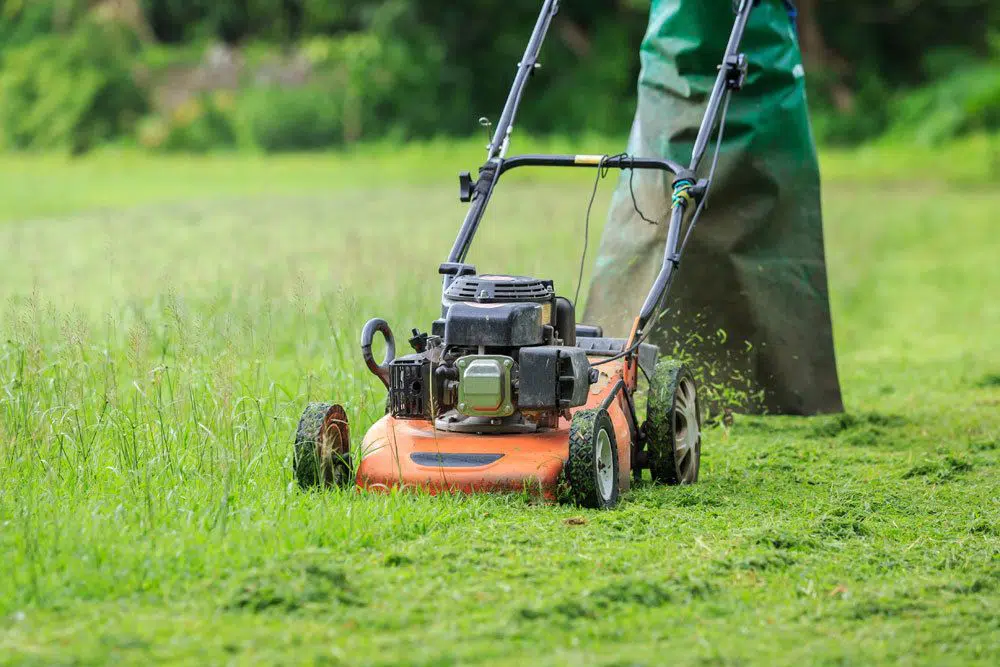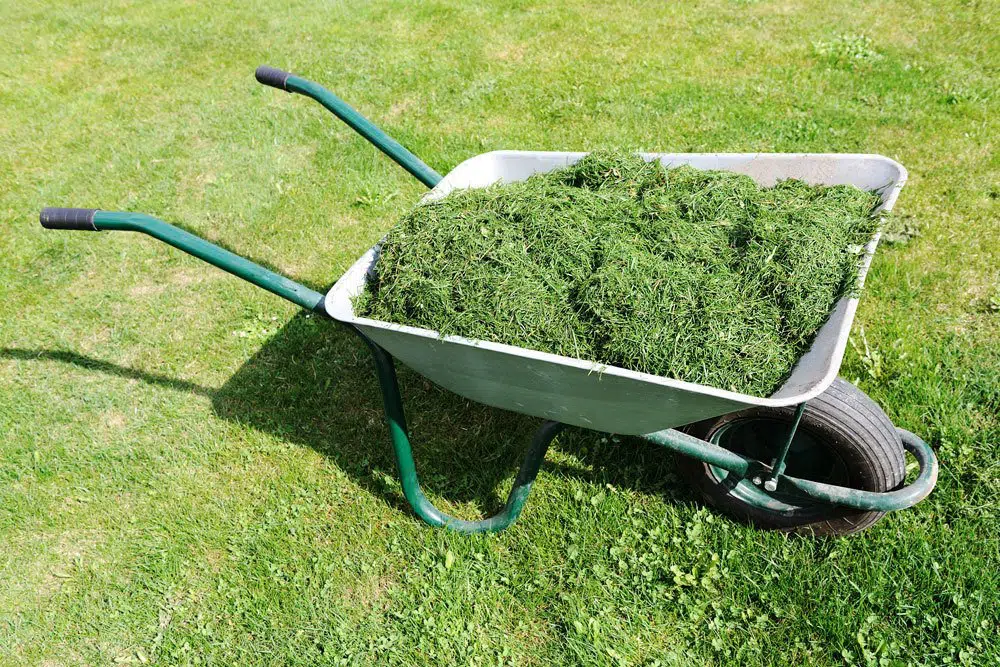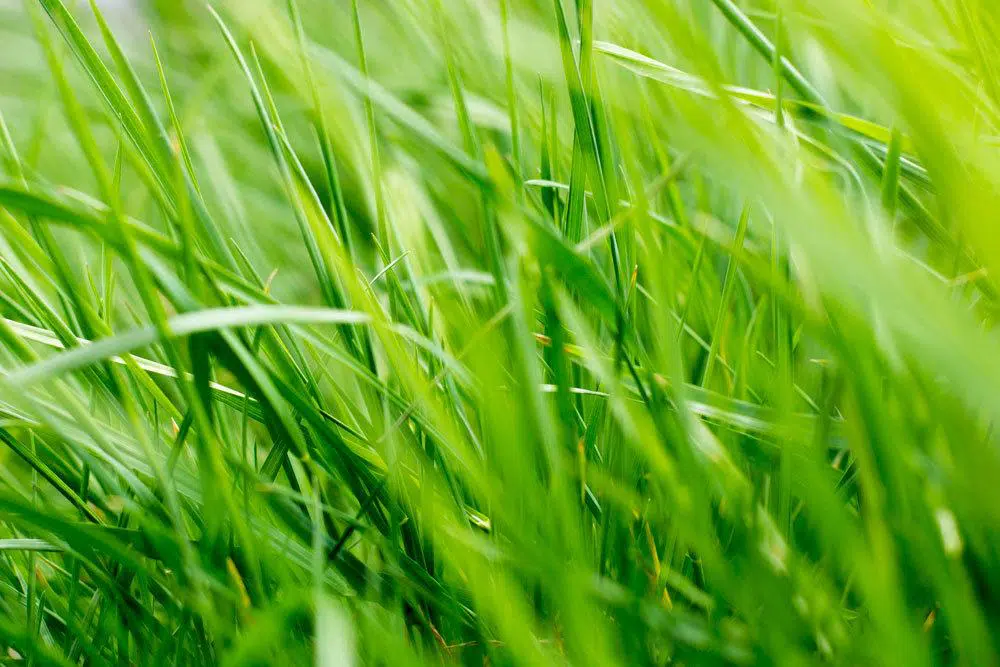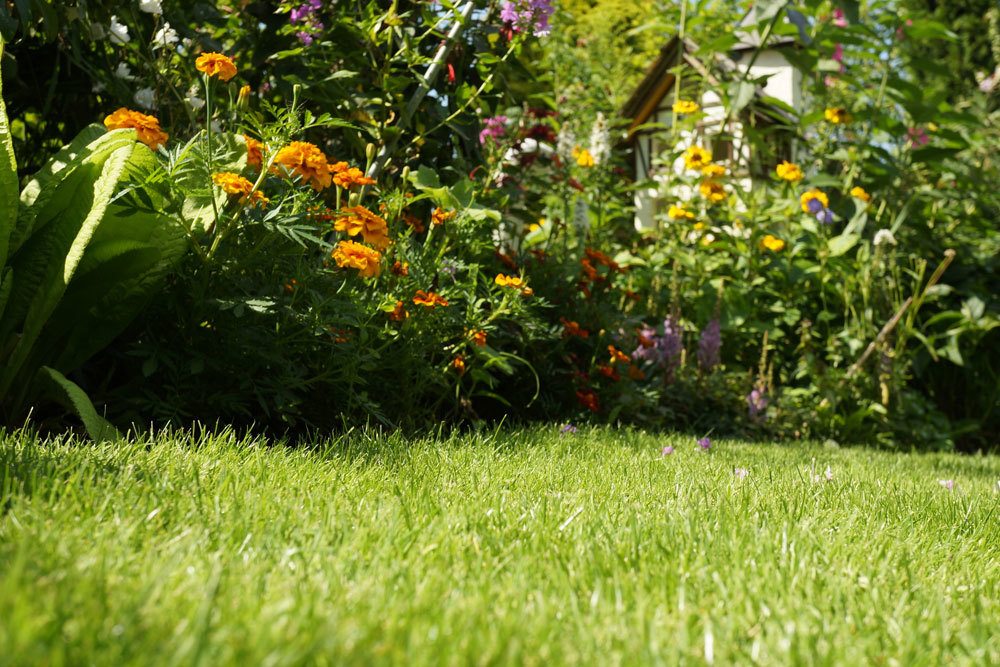In theory, it is quite easy to cultivate a strong lawn. But in practice, over time, the lawn may become too compacted. In order for a lawn to grow thick and be lush green, you need to aerate it occasionally. This aeration loosens the garden soil and allows more oxygen to reach the roots of the lawn grasses. With suitable equipment and our instructions, you can quickly eliminate this problem.
Contents
- 1 Difference between scarifying and aerating
- 2 Scarifying
- 3 Aerating
- 4 Compaction
- 5 Timing
- 6 Instructions
- 7 Preparation
- 8 mowing the lawn
- 9 scarifying
- 10 Equipment and procedure
- 11 small lawns
- 12 Lawn aerator shoes
- 13 Manual lawn aerator roller
- 14 Aerator fork (aerating fork)
- 15 larger areas
- 16 Electric aerifier
- 17 Hole density
- 18 Follow-up
- 19 remove excavation
- 20 fertilizing
- 21 sanding
- 22 watering
- 23 Author
Difference between scarifying and aerating
Both processes, scarifying and aerating are measures that are indispensable for a healthy, green lawn. Dethatching and aerating are necessary to allow the grasses to reabsorb enough nutrients and water, and to allow enough air to reach the roots.
Scarifying
Scarifying involves cutting up and removing old clippings and felty compaction that have formed on the surface. However, the blades of the machine do not penetrate very deeply into the soil. Only the lawn felt should be cut up, not the soil and the grass roots lying in it.
Aerating
Aerating, on the other hand, involves perforating the upper soil structure between the grasses. This is usually done with the help of long spikes or thorns, so-called spoons, which are driven up to 10 cm deep into the soil. These holes loosen the soil and allow water and air to reach the roots of the grasses. This process is so important for the lawn, because in the course of time the soil becomes compacted and thus no oxygen can get in. In addition, water transport is no longer optimal in compacted soil. In technical terms, aerating the lawn is called aerification.
Compaction
Reasons for compaction
The soils of such grass areas that are increasingly driven on, used as sports and play lawns, or even as sidewalks, compact particularly quickly. The more a lawn is used, the faster the top layer of soil compacts. This can often be seen when rainwater no longer drains off properly after a shower and puddles form on the surface. If the lawn is no longer optimally cared for, this leads to increased spread of moss and weeds.
Timing
While most gardeners dethatch their lawns in the spring and possibly another time in the fall, aerating the lawn is theoretically possible year-round. The best time for aeration is in the spring between mid-March and May. However, there is no reason why this measure should not be carried out twice a year.
- Timing: possible all year round
- frequency depends on the load (compaction) of the lawn
- usually necessary between once every two years to twice a year
- unfavorable time: during long rainy periods
- do not aerate during long dry periods
Instructions
It is best to consistently continue the lawn care program immediately after dethatching. After all, the greenery will fare better if it gets regular fresh air. You can aerate the lawn with either a manual aerator or a motorized aerator. Both options involve pushing tubular holes into the ground. Our detailed instructions will help you do everything right from the start.
Preparation
mowing the lawn
When aerating the lawn, it is important that the grass is not too long. That is why it has proven to be useful to mow the lawn in advance.

scarifying
Aeration works optimally when the gardener ensures in advance that the mown grass and dead plant debris are removed from the lawn. For the removal of this lawn thatch, equipment (scarifiers) are available that cut and remove this layer. Ideally, dethatching is done twice a year, once in the spring and once in the fall.
Equipment and procedure
In the market there are various types of equipment for aerating the lawn. However, depending on the design, they mean quite strenuous work. Which device is best for you depends mainly on the size of your lawn. Large devices are of course correspondingly expensive and are only worthwhile for larger areas. If you don’t want to invest in a motorized lawn aerator yourself, you can also rent a device at a relatively inexpensive daily rate from specialized dealers. The following equipment is suitable for normal home gardens.

small lawns
If the lawn area is only a few square feet, as is often found in front yards, a manual device is usually sufficient.
Lawn aerator shoes
Anyone with only a small lawn area in their yard will be fine with simple aerifiers. Lawn aerator shoes are soles with spikes that can simply be strapped under your regular shoes. Following that, all you have to do is walk across the lawn.
Manual lawn aerator roller
Equally well suited for smaller lawns are lawn aerator rollers that are operated manually. They consist of a cylinder that has widths between 25 and 45 centimeters, depending on the design. On this cylinder (roller) there are spikes made of steel a few centimeters long. These implements resemble a reel lawn mower and are rolled in paths across the lawn.
Aerator fork (aerating fork)
Also used to loosen the soil is an aerating fork. Sharpened, downward-tapered hollow tines punch holes in the lawn. The aerating fork is equipped with a wide T-handle and is kicked into the ground with the foot like a spade. In the process, the excavated soil is transported away upwards.

larger areas
For large lawns, it is worth purchasing a motorized lawn aerator. Alternatively, such an aerifier can be rented inexpensively for a day from a hardware or specialty store.
Electric aerifier
Electric lawn aerators visually resemble a lawn mower and are also similar in operation. Instead of a cutting blade, the devices have spikes on the underside that are driven into the ground when the lawn is run off. All you then have to do is drive them evenly up and down the lawn.
Combined dethatchers and lawn aerators.
A large number of dethatchers can be converted into a lawn aerator. In these combination devices, the blade attachment is then usually replaced by a roller with spikes.
Hole density
For aeration to be effective, at least 200 holes per square meter should be punched in the soil. Manual and electric devices with rollers automatically make this number of holes in the soil, provided that you strictly drive up and down the lawn in closely following rows, as in lawn mowing. With lawn aerator shoes and an aerator fork, it is important to pay attention to the appropriate number of holes in the execution.
Follow-up
Simply punching holes is not enough when aerating the lawn. Otherwise, the soil would quickly compact itself again.
remove excavation
With many devices, the spurs are hollow on the inside, so they produce an excavated soil that must be removed afterwards. Some motorized versions have an extra collection basket for this purpose, while with others the excavated soil must be thoroughly leveled.
fertilizing
By the way, a lawn fertilizer achieves the best effect after aeration. In this case, the nutrients penetrate particularly well into the soil and are easily absorbed by the roots of the grasses. If necessary, you can add suitable filling material such as sand or humus.
sanding
Subsequently, it is necessary to fill the created holes in the soil with sand. The sand acts as drainage and thus prevents waterlogging. Over time, earthworms and other soil dwellers distribute the sand in the soil. The soil therefore becomes more permeable to water over time, but also leaner.
- about five liters of sand per square meter
- preferably use quartz sand
- sprinkle on the lawn
- distribute with a leaf broom

watering
After aerating the lawn, the area should be watered heavily. In this way, the water and oxygen again penetrate to the fine roots of the plants, so that it can grow again at full strength.


